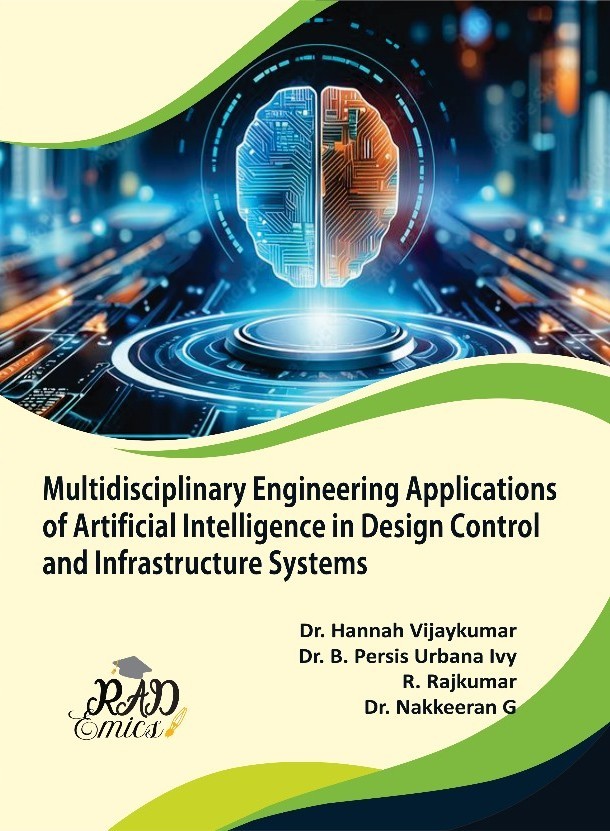
Peer Reviewed Chapter
Chapter Name : Natural Language Processing and Transformer Models for Intelligent Software Development Tools
Author Name : R L Jasmine, G. David Raj, A.K. Ashfauk Ahamed
Copyright: ©2025 | Pages: 32
DOI: 10.71443/9789349552609-05
Received: 28/03/2025 Accepted: 12/07/2025 Published: 06/09/2025
Abstract
The rapid advancement of Natural Language Processing (NLP) and Transformer models has revolutionized the software development landscape, offering intelligent solutions to enhance productivity, improve code quality, and automate repetitive tasks. This chapter explores the integration of NLP and Transformer-based models within the software development lifecycle, with a particular focus on their application in development tools such as Integrated Development Environments (IDEs), version control systems, and testing frameworks. The chapter discusses the significant impact of NLP-driven code suggestions, automated bug detection, and documentation generation in streamlining the development process. Additionally, it examines the challenges associated with the scalability and seamless integration of these tools into existing development ecosystems, particularly in large-scale software projects. Through a detailed analysis, this chapter emphasizes the need for adaptive, real-time NLP models that can effectively support diverse development teams and continuously evolve alongside the software development process. By addressing key concerns such as data bias, model interpretability, and performance optimization, this chapter offers valuable insights into the future of AI-powered software engineering. The integration of NLP and Transformer models holds the potential to transform software development into a more efficient, error-resistant, and intelligent process, ultimately driving innovation and reducing time-to-market.
Introduction
The field of software development has witnessed significant advancements with the integration of Natural Language Processing (NLP) and Transformer models [1]. These technologies, traditionally used in areas like text analysis and machine translation, have now found powerful applications in automating and optimizing various stages of the software development lifecycle [2]. By leveraging NLP, which enables machines to understand and generate human language, and Transformer models, known for their exceptional ability to handle complex language tasks, development tools can now provide intelligent support to developers [3]. This transformative shift allows software development processes to become more efficient, accurate, and scalable [4]. NLP-driven tools offer a range of capabilities, such as code generation, bug detection, documentation automation, and requirement analysis, all of which significantly reduce the cognitive load on developers and streamline their workflows [5].
Transformers, especially models like BERT, GPT, and T5, have revolutionized how machines process language [6]. These models, designed around the concept of self-attention, enable deep contextual understanding of input data, which is critical for tasks that require an understanding of the relationships between different parts of a software project [7]. For instance, Transformer models can suggest improvements in code quality, provide meaningful feedback during code reviews, and even detect vulnerabilities in software before they reach production [8]. The ability of these models to work across different layers of the software stack from code syntax and structure to requirements and documentationâ€â€has made them indispensable tools for modern software development [9]. As development practices become increasingly reliant on these advanced models, the potential for their widespread adoption in various aspects of development toolchains grows [10].
Integrating NLP and Transformer models into existing software development environments presents several challenges [11]. The sheer complexity of these models requires substantial computational resources, which can create barriers to their seamless adoption in smaller development teams or resource-constrained environments [12]. Ensuring that NLP tools can operate effectively across diverse programming languages, frameworks, and software development paradigms remains a significant hurdle [13]. Most existing NLP models are trained on vast corpora of text but are not always tailored to the specific syntax and semantics of programming languages [14]. This necessitates the fine-tuning of models to ensure that they can effectively assist developers in real-time without introducing errors or misunderstandings. The challenge of maintaining performance and accuracy across various project sizes and configurations remains a crucial consideration in the design of these tools [15].